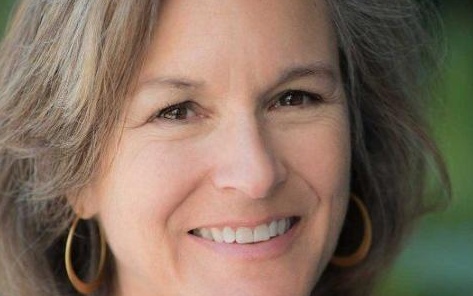Tracey J. Woodruff, PhD, MPH is a leading scientist who has produced seminal research on how harmful chemicals and pollutants impact health, pregnancy, and child development, including the first international study to document the effects of air pollution and preterm birth and the first to document toxic chemicals in pregnant women and newborns. A national expert in chemical and regulatory policy, Dr. Woodruff was a senior scientist and policy advisor for the U.S. EPA’s Office of Policy prior to joining the University of California, San Francisco (UCSF).
Her current roles include: Director of and Alison S. Carlson Endowed Professor for UCSF Program on Reproductive Health and the Environment (PRHE) at UCSF.; Professor in the UCSF Department of Obstetrics, Gynecology and Reproductive Sciences and the Philip R. Lee Institute for Health Policy Studies; Director of the EaRTH Center.; and Director of UCSF’s new Center to End Corporate Harm.
For Dr. Tracey Woodruff, boldness, perseverance and brilliance have accompanied her every pursuit. We’re lucky to have Dr. Woodruff as a SafetyNEST Advisor and a guest in today’s brief conversation:
What’s your primary focus today?
“We’re most focused on how we can support structural changes to systems so that they correctly value science, public health, and health equity. The way that current systems are set up doesn’t always prioritize this. We see that people and communities are being harmed due to the pre-established rules of the game, which favor those with a financial stake in the outcome—primarily corporate interests. We’re really focused on making changes to these systemic structures so that every single community and every single person doesn’t have to go through the same story again of ‘Oh I got this exposure; I got sick’ or ‘I had multiple exposures.’
How significant is education in driving systems change?
“Community awareness and education is part of the solution. When people are knowledgeable about an issue, they can advocate on behalf of others. Often times though, the issue is structural. For example, climate change deals with emissions from industrial sources, which ultimately only the government can control. We can’t decide whether a coal-fired power plant is going to emit a pollutant or not. Working with communities is important. We need to support communities advocating change and provide scientific and technical expertise where that’s needed.”
What are some actionable steps that women and families can implement to keep their homes safer?
“There are many evidence-based actions we can take to increase our resiliency and reduce our exposure to toxic chemicals, and many changes don’t cost very much. In some cases, making changes is free. For example, taking your shoes off before you go into the house. Chemicals love dust. HEPA vacuums and wet mopping are good ways to reduce dust in the home.
For cleaning, you can use low cost products such as vinegar and water or baking soda and water. These products are excellent for cleaning in the home, and you don’t need to buy brand name products.
Food is really important. We’ve been doing more work in this area because the industrialized food supply is both addictive and harmful. Industrialized food often contains harmful nutrition content including sugars, salts, and a number of different toxic chemicals. Eating single ingredient foods and eating lower on the food chain is really key. It has a win-win-win solution for your health.”
What progress in environmental health policy is most promising?
“All the work that the state of California, health advocates, and scientists did to eliminate the use of flame retardants in products is a huge success story. People in California had the highest levels of flame retardants in their blood, probably in the world, all because of a regulatory standard that required that these flame retardant chemicals be used in foam furniture.
Through a lot of science advocacy and sun-shining of how the tobacco industry was originally involved in these regulations, these combined efforts helped move the needles so that flame retardants would be banned in furniture products in the state of California. When science and health advocates work together, we can make meaningful change against a really well-funded industry that was lying to legislators and the public.”
How do you think about health across a person’s lifespan?
“We know that rates of many health conditions—whether that’s cancer, fertility problems, or neurodevelopment conditions happen to people when they’re younger. Genetics only explains a small fraction of any disease, and most of the diseases are multifactorial.
This highlights why it’s so important that we continue to do this work and talk to decision-makers, scientists, clinicians, and the public about how this is not a select problem. Everyone is exposed to these chemicals. We know these chemicals are harmful. We also know that these stakeholders can influence health. So, my focus is to advance research demonstrating the link between toxic chemicals and health to support better decision making that can impact health across the lifespan, whether these decisions are made by an individual or a policymaker.
We’ve seen some positive policy changes in the past such as with flame retardants – and we’re seeing some movement more recently with PFAS. We want to see comprehensive change. Until that happens, we’ll focus on getting these wins where we can!”
Thank you, Tracey – we are so grateful for all the work you’ve done and continue to advance on behalf of our health!
Learn more about Dr. Woodruff’s work: https://prhe.ucsf.edu/profiles/tracey-j-woodruff-phd-mph
